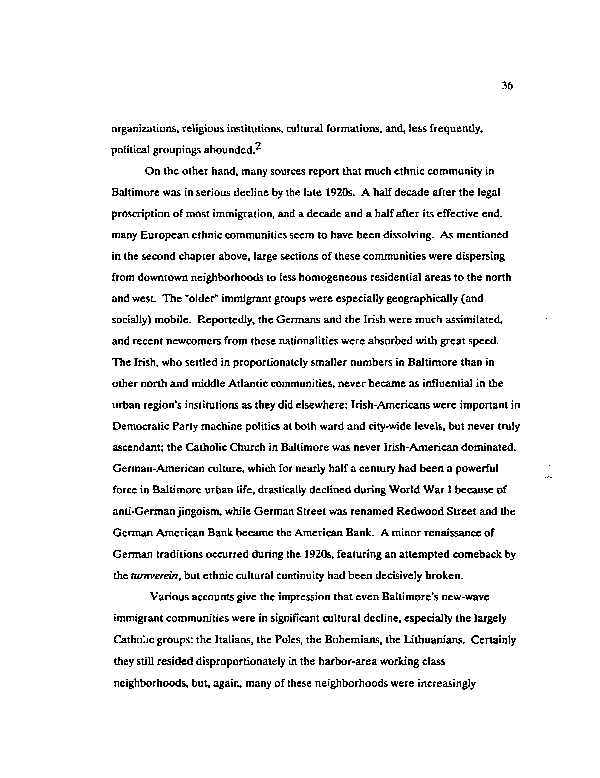|
36
organizations, religious institutions, cultural formations, and, less frequently,
political groupings abounded.
On the other hand, many sources report that much ethnic community in
Baltimore was in serious decline by the late 1920s. A half decade after the legal
proscription of most immigration, and a decade and a half after its effective end.
many European ethnic communities seem to have been dissolving. As mentioned
in the second chapter above, large sections of these communities were dispersing
from downtown neighborhoods to less homogeneous residential areas to the north
and west. The "older" immigrant groups were especially geographically (and
socially) mobile. Reportedly, the Germans and the Irish were much assimilated,
and recent newcomers from these nationalities were absorbed with great speed.
The Irish, who settled in proportionately smaller numbers in Baltimore than in
other north and middle Atlantic communities, never became as influential in the
urban region's institutions as they did elsewhere: Irish-Americans were important in
Democratic Party machine politics at both ward and city-wide levels, but never truly
ascendant; the Catholic Church in Baltimore was never Irish-American dominated.
German-American culture, which for nearly half a century had been a powerful
force in Baltimore urban life, drastically declined during World War I because of
anti-German jingoism, while German Street was renamed Redwood Street and the
German American Bank became the American Bank. A minor renaissance of
German traditions occurred during the 1920s, featuring an attempted comeback by
the tumverein, but ethnic cultural continuity had been decisively broken.
Various accounts give the impression that even Baltimore's new-wave
immigrant communities were in significant cultural decline, especially the largely
Catholic groups: the Italians, the Poles, the Bohemians, the Lithuanians. Certainly
they still resided disproportionately in the harbor-area working class
neighborhoods, but, again, many of these neighborhoods were increasingly
|

